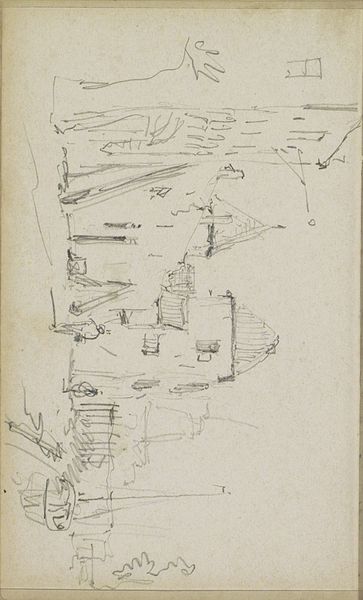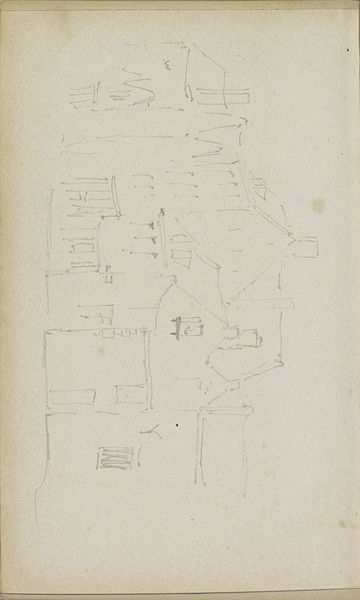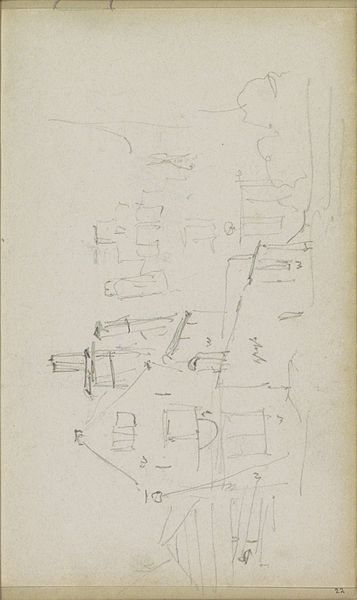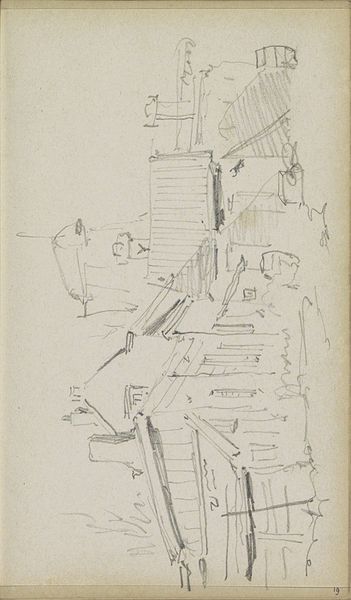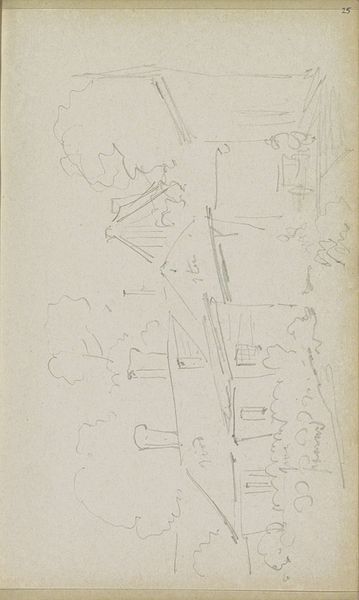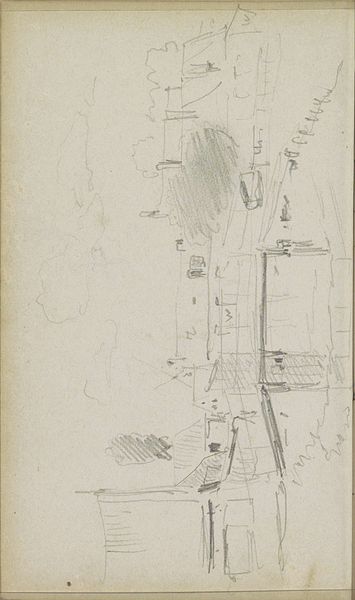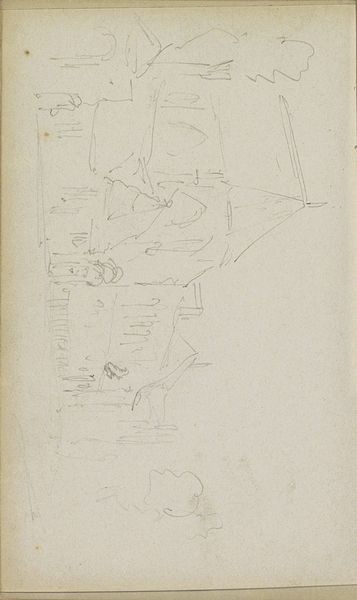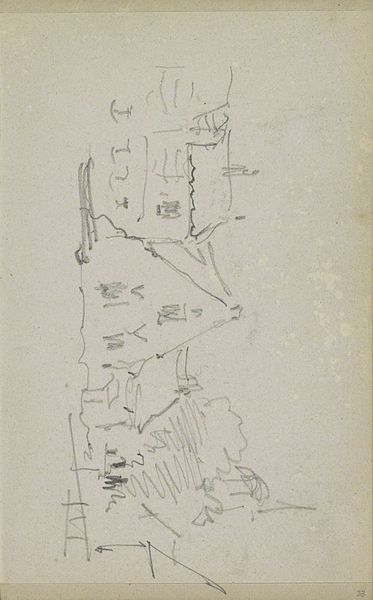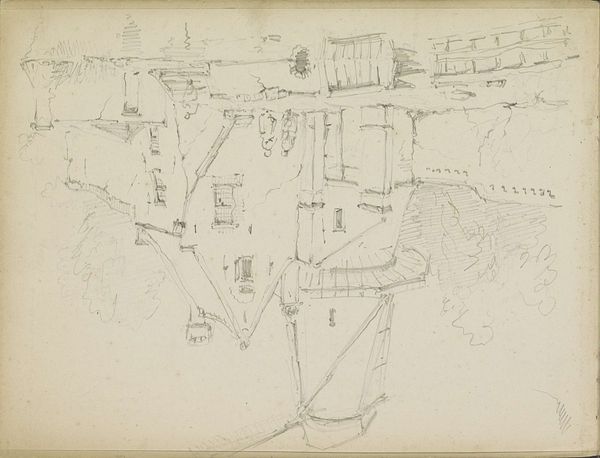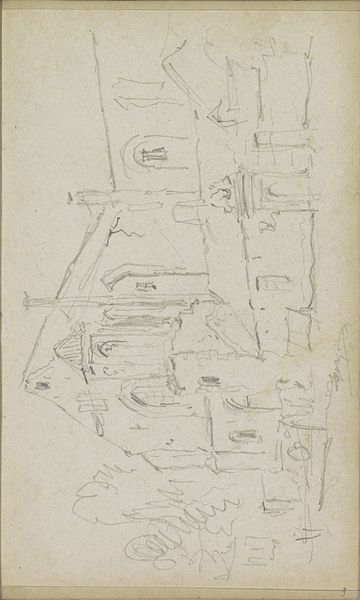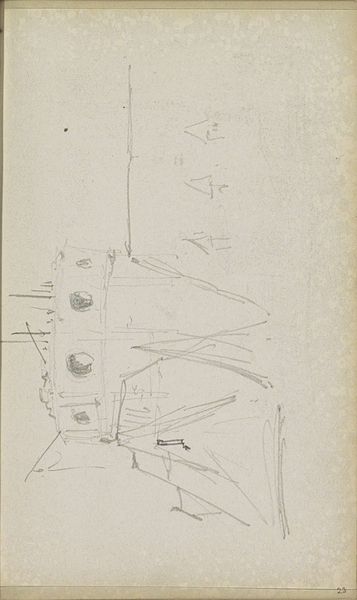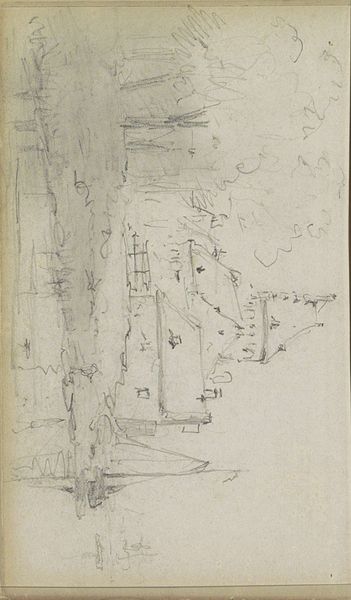
drawing, paper, pencil
#
drawing
#
amateur sketch
#
quirky sketch
#
sketch book
#
landscape
#
paper
#
personal sketchbook
#
idea generation sketch
#
sketchwork
#
detailed observational sketch
#
pencil
#
sketchbook drawing
#
cityscape
#
storyboard and sketchbook work
#
realism
#
initial sketch
Copyright: Rijks Museum: Open Domain
Curator: This drawing, aptly titled "Stadsgezicht," or "Cityscape," is by Adrianus Eversen and dates sometime between 1828 and 1897. It's rendered in pencil on paper. Editor: My first thought is “fragmentary.” It feels like a fleeting impression, a momentary capture of something more substantial. Curator: That impression of transience resonates given the nature of drawings, particularly sketches. They're often preliminary explorations, existing in the liminal space between idea and finished work. Eversen likely created this to refine compositional elements for eventual paintings. The quick pencil work also reveals a direct link to the artist’s hand and process. Editor: I see a strong sense of verticality in the composition, created by those buildings that dominate the space. Despite the sketch-like quality, there’s a clear effort to render architectural forms and light playing across their surfaces, using variations in line weight and hatching. The interplay of light and shadow brings depth to what might otherwise be just linear marks. Curator: I agree, and looking closer we can discern details of everyday life in 19th century Netherlands—details of construction, materials used for the buildings and how those details impact the city as a workspace and living area for local workers. Editor: It also creates a pleasing, even sophisticated, structure. Note how the sketch emphasizes planar recession and perspectival accuracy; that diagonal rooftop, the carefully drawn horizontals in the taller buildings in the middle... all creating spatial depth. Curator: Indeed, the very materiality of the sketch brings forth questions about the labor and means necessary for making such drawings, inviting reflections on the nature of the cityscape and its relationship to broader socio-economic structures. Also, the support which is paper in this work and the production that’s involved invites viewers to imagine a world, era or region in which paper and pencil became popular methods of mass media documentation and record keeping. Editor: I appreciate how we both saw very different but complementary perspectives. Considering this piece as a unified construction with form and social commentary. I notice new connections when viewed together, such as how light bounces on different planes depending on its material. Curator: For me, considering those planes, whether made of plaster or paper, is to consider the value and implications behind the act of artistic creation. What stories of making art with accessible, cheap materials may also reflect on our own art consumption habits today?
Comments
No comments
Be the first to comment and join the conversation on the ultimate creative platform.
